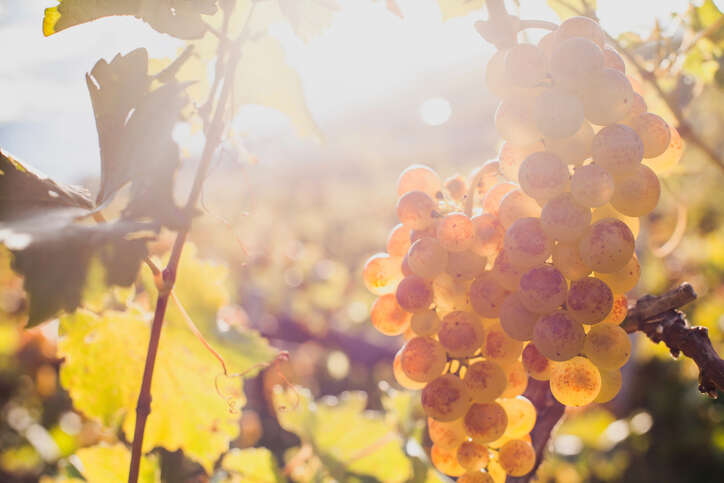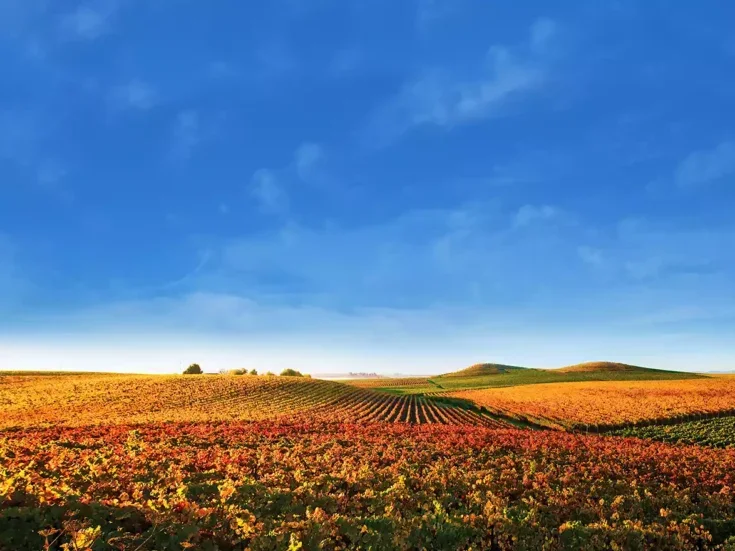
Inspired by a recent trip to California, Benjamin Lewin MW explores the ways in which winemakers assess ripeness, and the competing ideas of what constitutes a truly ripe grape.
Ripeness is a moving target. First, it was simply sugar levels; once grapes reached somewhere around 22 Brix (12% potential alcohol), it was time to harvest. This did not work so badly in cool conditions, because by the time the grapes reached 22 Brix, they were ripe (or at least, as ripe as they were going to get). In the present warmer conditions produced by climate change, this does not work so well; sugar accumulates more quickly, and it’s common enough to exceed the old limits for Brix well before the grapes are ripe. Enter the new criterion of phenolic ripeness.
Phenolic ripeness: A vague concept
Curiously for an age when measurements become ever more precise, phenolic ripeness is in fact somewhat vague as a concept, a bit along the lines of pornography (in the words of a famous judge)—you know it when you see it, but it’s hard to define. There’s no objective criterion equivalent to a specific level of Brix. Phenolic ripeness depends largely on tannins, and although there are ways to measure the total level of tannins, there is no means of measuring character or quality of tannins. The best criterion for assessing phenolic ripeness is widely considered to be tasting the seeds: If this isn’t turning the clock back, what is?
I am not at all sure we are making better wine with the new criterion. Define “better wine,” you will say. I concede immediately that by all objective measurements (relying on technical factors such as sugar/acid balance, IPT level, volatile acidity), the wine has never been better. But is it more enjoyable to drink (which is what I mean by better wine)? I give one example. I recently tasted a vertical of the top vintages of Lynch-Bages from 2016 to 1961. Even allowing for the depredations of age, the younger wines were “better” by criteria of color, levels of extract, superficial richness, etc, etc. They were mostly round, ripe, deep, and delicious, with alcohol levels ranging from 12.5% in 1966, to 13.5% in 2016. But none of them could hold a candle to the 1961: light, elegant, and ethereal—and with 12% alcohol. I would hazard a strong opinion that by modern criteria the grapes harvested in 1961 would be regarded as seriously unripe today. I suppose many contemporary drinkers would regard the 1961 as lacking in richness, but for my money, I’ll take subtlety over richness any day.
Different views of ripeness
I was given to thinking about the limitations of phenolic ripeness as a criterion for ripeness by experiences during a month spent recently in Napa Valley. We keep hearing that the producers are backing off the big, bold wines of the 1990s to make more elegant wines with lower alcohol. I was struck by the fact that far fewer wines showed the obtrusive alcohol and extract that I had found to be a problem in the past. The alcohol levels, however, have not actually come down that much: for Cabernet Sauvignon or Bordeaux blends, they are usually well into the 14%s. This is just the DNA of Napa, producers say.
My impression is that alcohol levels have not changed that much; the big difference is in the tannins. They are finer and silkier, and because there is less bitterness on the finish, the fruits seem purer on young wines. This makes the wines more approachable, not because of greater fruit concentration but because the fruits are better balanced against the tannins. I see this increase in refinement as the most significant advance in Napa over the past decade. If more aggressive tannins enhance the perception of alcohol, this may be why the wines carry their alcohol more lightly.
In Oregon, some producers of Chardonnay have taken to harvesting early, to keep freshness and acidity, and then chaptalizing to bring the alcohol up to an acceptable level. That’s a completely different view of the right level of ripeness, but here we have the dilemma of whether to try to make a “better” wine or whether to look for authenticity (meaning that the main objective is to reflect vintage conditions at the source).
Chaptalization started out as a means but developed into something of an end. Originally it was used to give wines with low natural alcohol, say around 11%, enough alcohol to have greater stability. But there are some areas where the tradition has become to chaptalize even when alcohol has reached a perfectly acceptable 12.5% naturally. Producers in Beaujolais often feel that the wine needs to have more alcohol to be weightier and have credibility. Pinot Noir in Germany has often been chaptalized to bring alcohol up an extra half percent to get a richer mouthfeel. Here the view of ripeness is almost the opposite of the situation when sugar is allowed to ride up to high potential alcohol in order to get phenolic ripenes; after physiological ripeness is reached, the wine is made richer. Of course, this happens less often now, in the area of climate change.
What follows phenolic ripeness?
My doubts about the consistency of phenolic ripeness as a criterion for ripeness were sharpened by an experience with wines from Fort Ross-Seaview, the area in Sonoma close to the Pacific. Vineyards are at elevations from 1,200 to 1,700ft (365–518m), well above the fog line, close to the ocean if not with a view over the sea. So, climatic conditions here are quite different from in Sonoma Valley or Napa Valley: cooler overall, but more direct exposure to sunshine. This is touted as the area for producing Pinot Noir and Chardonnay in a more Burgundian style.

From my experiences, this is a mixed success. On the one hand, it has produced some of the most restrained Chardonnays and Pinot Noirs I have experienced in northern California. But I also had a curious experience with both varieties with wines that, to all intents and purposes came from ripe grapes, as judged by alcohol level (in some cases as high as 14.7%), color, level of extract, roundness, and sense of viscosity on the palate, and so on. But some Chardonnays also showed quite an herbaceous character to counterpoise the fruits; in fact, in a blind tasting I might have wondered whether Sauvignon Blanc was the variety. And some Pinot Noirs showed medicinal character in the form of mentholated notes. Does this mean that the grapes were not ripe after all? Could it be that the development of grapes at higher altitudes follows a different course because there is a different balance between factors such as heat and sunshine, and so different criteria are required for ripeness compared to the valley floor?
One possible explanation for the Pinot Noir is that there’s a fashion for whole-cluster fermentations, so perhaps the stems were not ripe enough. (This takes me back to the issue of whether criteria should be the same at altitude and in the valley.) One producer who advocated this as the cause said, “It’s fashionable, but not everyone knows how to use it properly.” That’s not likely to be the cause with Chardonnay, where I’m stuck for an explanation.
Heat and growth rates
Of course, there could be extraneous causes. Winemaker Chris Howell at Cain says, “I think the Cabernet has a green character—I hesitate to call it vegetal—in the mountains. It won’t go away even at absurd levels of sugar. One idea is that it’s due to fir trees (in the same way eucalyptus can color wines), but I think it is just plain colder.”
Another insight into discordancies in ripeness comes from Merlot, which is rarely successful in Napa. This is usually thought to be because it’s too hot, but I’ve had Merlots (and blends) that have been aggressively vegetal, even though all other criteria suggest high ripeness. The winemaker at one top producer says, “The Merlot that grew at the entrance always developed a vegetal note. It grew very fast early in the season. Once we introduced water stress before veraison, the vegetal notes disappeared.” So, perhaps differential rates of growth are a factor.
Some people hold the view that the character of a vintage in Napa is determined not so much by the overall accumulation of degree days during the growing season, but by the frequency and duration of heat spikes. (When heat spikes are severe, vines close down.)
Taking a broad view, ripeness requires a certain level of sugar, for acidity not to fall too far, and the tannins have to be ripe, however that is defined. But (at least for black grapes) it is safe to assume that the ripeness of all sources of tannin (skin, stems, and seeds) develops in tandem. So, is phenolic ripeness just as simplistic a concept for measuring ripeness in its way as Brix used to be? What comes next?






